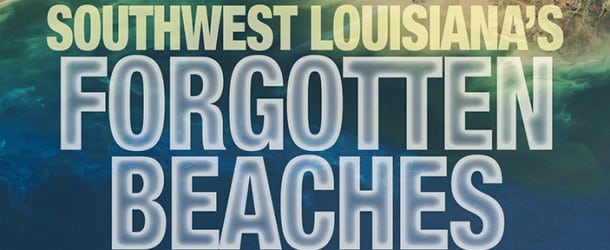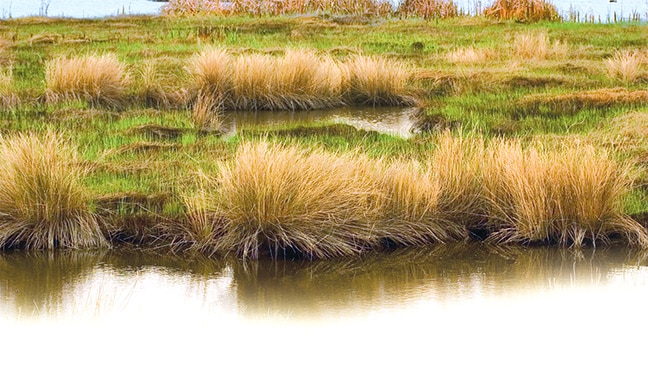With 397 miles of coastline, the great state of Louisiana has the third longest coastline in the continental United States, after Florida and California. Almost 100 miles of that shoreline is in Cameron Parish. In fact, only 14 continental states have more coastline than Cameron Parish has all by itself.
It is the third largest parish in Louisiana by land area, yet it has the second smallest population.
This is due in large part to Hurricane Rita in 2005 and Hurricane Ike in 2008. According to the 2010 U.S. Census, the population of Cameron Parish was only 6,839. That was a decline of 31.5 percent between the 2000 and 2010 census.
Between the loss of one-third of the parish population, the hurricane devastation, the pollution caused by pipelines and offshore drilling, and the restrictive new building codes and insurance costs, the beaches of Southwest Louisiana have been neglected and all but forgotten by state and federal government agencies. The beautiful stretch of shoreline and beaches that should be the crowning jewel of Southwest Louisiana is in a state of erosion, pollution and neglect.
The History Of No Man’s Land
The western half of Cameron Parish was part of the 1806 Neutral Ground agreement that attempted to resolve boundary issues between the United States and Spain after the Louisiana Purchase. The land between the Calcasieu River (then called the Arroyo Hondo) and the Sabine River became known as “No Man’s Land,” because it was devoid of any government interference or law enforcement. As a result, it became a hotbed of outlaws and pirates.
Cameron Parish beaches have again become a no man’s land. Neither the state nor the federal governments want to take any responsibility for the restoration or development of this precious natural resource. According to Cameron Parish Police Jury vice president Curtis Fontaine, the beaches belong to the state, but they get no funding from the state for their maintenance or upkeep.
“We try to maintain the beaches as a parish and do a beach cleanup twice a year,” Fontaine says.
This is an overwhelming task for the only unincorporated parish in the state, which gets limited funding because of the low population.
Louisiana State Parks Department
When one looks at the map of state parks provided by the Louisiana Parks Department, it is easy to see that the state, as a whole, is sadly lacking in state beaches, and the few that exist are in southeast or central Louisiana. There are 100 miles of coastline in Cameron Parish alone, and there is not one single state beach. In fact, we only have one state park in all of Southwest Louisiana, Sam Houston Jones Park in Lake Charles.
When one compares the four states in the continental United States with the most coastline, Louisiana’s parks department comes in last place for the number of state beaches compared with miles of coastline. (California: average of one state beach for every 14 miles; Florida: average of one state beach for every 19 miles; Texas: average of one state beach for every 45 miles; and Louisiana: one state beach for every 80 miles of coastline.)
I lived most of my life in California, so I just don’t get this. I grew up in an atmosphere where we cherish our beaches; we take care of our beaches; and many of my best childhood memories are of family outings to the beach and laughter around the fire pits at night. Equally important is the fact that states like California and Florida have figured out how to make the beaches profitable so they can support themselves. State beaches provide summer jobs to teens, and organize lifeguard, surf, and marine biology camps for kids in the summer.
When Mother Nature destroyed the Huntington Beach Pier, we figured out how to rebuild, just as other states have rebuilt after natural disasters.
Louisiana doesn’t seem to place any importance on rebuilding or maintaining this precious natural resource, or developing state beaches for families to enjoy and build their memories.
The focus seems to be around New Orleans. I believe the powers that be forget about this side of the state. Southwest Louisiana residents should not have to drive 100 miles to enjoy a clean and safe beach with their families.
Alarming Government Reports
In 2012, The National Resources Defense Council (NRDC) compiled a report that covered over 3,000 beaches nationwide. The report focused on the 15 worst beaches in America for bacteria count, contamination, sewage runoff and animal waste. An appalling five of those 15 beaches were in Cameron Parish, and were named “repeat offenders” by the NRDC.
Those beaches are: Constance Beach, Gulf Breeze, Little Florida, Long Beach and Rutherford Beach. All five of those beaches have persistent contamination problems, and have had water samples that violated public health standards more than 25 percent of the time.
Cleaning this up is not a job that Cameron Parish can take on by itself. State and federal support is needed to conquer this problem — support that is sadly lacking.
The coastal lands are our first line of defense against catastrophic flooding due to hurricanes. The scientific community believes that this coastal land mass is not sustainable. Despite years of government reports and warnings, the coast continues to erode at an alarming rate. From 1932 to 2000, Louisiana lost an estimated 1,900 square miles of land due to coastal erosion, and we are projected to lose another 700 square miles over the next two decades. The United States Geological Survey has called this “the highest rate of wetlands loss in the nation,” but the problem continues to be ignored when it comes to any action beyond reports.
The Restore Act: SWLA Coastline Forgotten Again
In June, 2012, Congress passed the Restore Act, which dedicates 80 percent of all prospective clean water act penalties relating to the Deepwater Horizon disaster to the Gulf Coast Restoration Trust Fund. The funds will be used to restore and protect the natural resources, ecosystems, marine and wildlife habitats, beaches and coastal wetlands.
The act allows each of the five states affected to submit restoration projects to the council. Louisiana submitted five projects for approval: the Golden Triangle Marsh Creation Project, the Mississippi River Maurepas Swamp Project, the Biloxi Marsh Living Shoreline Project, the West Grand Terrace Beach Project, and the Lower Mississippi River Management Program. These are all in Southeast Louisiana. No plans at all were submitted for the Southwest part of the state. It seems our coastline was forgotten again.
Oil Companies, Platforms, Wells And Pipelines
Oil, gas and pipeline companies are responsible for a substantial amount of the erosion along our coastal regions. Over 10,000 miles of canal and pipeline routes run through Louisiana’s coastal lands, exposing them to erosion, disturbances in the ecosystem, contamination and pollution. The Louisiana Flood Protection Authority called this network of canals and pipelines “a mercilessly efficient, continuously expanding system of ecological destruction.” The industry needs to be held accountable for the damage it has done to our natural resources.
Pipelines are only a part of the problem. There are now over 27,000 abandoned oil and gas wells off our shores at the bottom of the Gulf of Mexico. These are an environmental minefield, and constitute more than half of the 50,000 wells that have ever been drilled in the Gulf.
The federal government characterizes 3,500 of those wells as “temporarily abandoned,” which means that they do not require the same type of sealing as abandoned wells. The drilling companies are granted one year to complete the well or permanently seal it.
It should be pointed out that BP’s Deepwater Horizon rig was being sealed for temporary abandonment when it blew. BP has over 600 abandoned wells in the Gulf.
State officials worry that many of these wells are leaking or poorly sealed. Both California and Texas have had to reseal scores of abandoned wells in their waters over the years. But Louisiana does not seem to have the ability to reseal abandoned wells in state waters.
The wells in federal waters are not routinely inspected by the federal government. The Bureau of Ocean Energy Management does not typically inspect wells that oil companies abandon. They rely on company reports and paperwork. They actually expect big business to abide by the honor system. The oil industry would have us believe that these abandoned wells will never leak, and the companies are not held accountable for damage they cause.
There are also 3,858 active oil platforms off the Gulf Coast at this time. It is not uncommon for trash and garbage from these platforms to wash up along the Louisiana shores. There is a long history of warnings about the environmental dangers caused by the oil industry, particularly with regard to abandoned wells. A study by the U.S. Mineral Management Service in 2001 cautioned that “some of the abandoned wells in the Gulf may be leaking crude oil.” It was another expensive report followed by a complete lack of action.
In The Words Of An Expert
Retired United States Army Lieutenant General Russel Honoré was commander of Joint Task Force Katrina, overseeing military relief efforts following the 2005 hurricanes that struck the gulf coast. “The fertile marshes, tidal flats and barrier islands of coastal Louisiana are among the most productive ecosystems in the world. These coastal lands provide essential habitat to migratory and native waterfowl. They are home to shrimp, crabs and oysters that feed the nation. They are the nursery for the rich bounty of marine life in the Gulf of Mexico and the source of tens of thousands of jobs.”
Many Questions, Very Few Answers
So the question becomes: Who should be responsible for protecting and maintaining our beaches? Our elected officials should be representing the needs of the coastal communities of SWLA. We need to let these politicians know how important this issue is. We need to make sure that our beaches and wetlands are not forgotten through yet another term of congress at both the state and the federal level.
Here is a list of the politicians that we have elected to represent Cameron Parish:
Louisiana State Senate, District 25: Dan Morrish
Louisiana House of Representatives, District 47: Bob Hensgens
United States House of Representatives, LA 3rd Congressional District: Charles Boustany
United States Senators from Louisiana: David Vitter and Bill Cassidy.
These are the people who need to remember that our beaches and wetlands are important to fight for. Let’s hope that the next legislative sessions will be more productive than the last when it comes to protecting and rebuilding our coastline.

















Comments are closed.